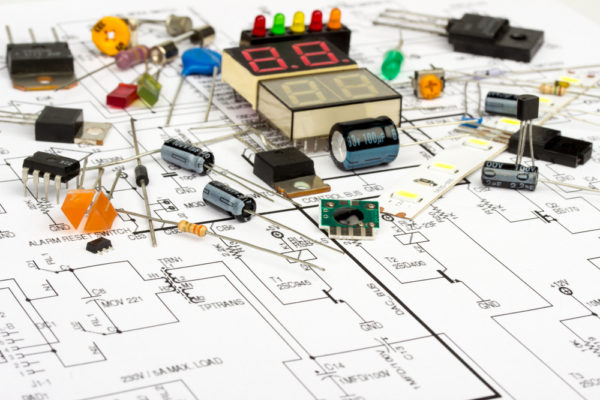Looking to develop designers and entrepreneurs? SXSWedu offered several ideas
How can schools prepare students to be the designers, innovators, and entrepreneurs our economy needs for future success? That was a key area of focus at the 2016 South by Southwest Education (SXSWedu [1]) conference in Austin, Texas, March 7-10, and a number of ed-tech companies and organizations demonstrated possible solutions.
The “maker movement” can play an important role in getting kids interested in innovation and design, and littleBits [2]—which makes easy-to-use electronic building blocks—is finding itself at the center of this movement. Until now, the company has focused mostly on the consumer market, but during a March 8 keynote session, littleBits founder and CEO Ayah Bdeir announced a new kit made specifically for schools.
“We want to unleash the inventor in everyone,” Bdeir said.
In a conversation with Education Week, Bdeir said schools need to find ways to make science, technology, engineering, arts, and math (STEAM) education more fun, engaging, and accessible for students.
“I studied engineering, and almost on a weekly basis I wanted to quit,” she said. “We need to find ways of approaching STEAM education differently.”
Bdeir said her experience in learning engineering as an undergraduate was “completely hands-off; as a result, many other students and I were turned off to it.” But when she arrived at the MIT Media Lab for her master’s of science degree, “it was the exact opposite. Every week was a new project, a new learning challenge. It was very scary, but also exhilarating and engaging.”
That’s the experience her company is trying to replicate for students at all levels with the new STEAM Student Set [3].
Bdeir described the product as “a toolbox for invention and learning, [using] real-world challenges and problem solving.” In one challenge, students invent a throwing arm and then compete to knock over cups by changing the torque and speed of the arm’s motor. In another challenge, students invent a self-driven vehicle.
All of the challenges are aligned with the Next Generation Science Standards, and the kit includes a 120-page teacher’s guide.
“Teachers are extremely busy, and they have the hardest job in the world,” Bdeir said. “Imposing on teachers that you now have to teach STEAM, without giving them the tools to do it, is adding pressure and intimidating many teachers.”
The ability to innovate is a critical skill that will prepare students for the jobs of the future, Bdeir said—many of which don’t even exist yet.
“When I went to school, there were no self-driven cars,” she said. “Professions are changing, and we have to prepare students to be designers and problem solvers” so they can adapt to this changing landscape.
Bdeir showed a video in which teachers who were involved in the development of the STEAM Student Set discussed their students’ experiences with the kit.
“My students’ vocabulary is changing,” one teacher said. “They’re using words like ‘prototype.’ I didn’t know that word when I was in the third grade.”
SXSWedu also featured a Playground area, where attendees could explore new products and services related to STEAM education, gaming, the maker movement, and more. Here are some of the highlights from the Playground.
- 3D printing is catching on quickly in schools, and 3Doodler [4] has created what it calls a “3D printing pen.” It’s a large handheld pen that extrudes strands of plastic. Students can add layers upon layers of this plastic to create three-dimensional objects, similar to how a 3D printer works. An EDU Bundle with 12 pens, 1,200 strands of plastic, and two power packs costs $1,000.
- Ardusat [5] offers kits and curriculum with everything students need to design their own science experiments in outer space, receive and analyze data, and publish their results.
- Electric Girls [6] is a new community of girls and women teaching each other to be leaders in STEAM fields. The group offers hands-on electronics and programming workshops in the New Orleans area, as well as a summer camp at Loyola University. In addition, it offers advice for how to engage girls in STEAM education and how to implement mentorship programs in schools.
- GameSalad is a digital game creation platform that allows users to create games using a drag-and-drop interface. GameSalad for Education [7], the platform’s school edition, is a useful tool for teaching the concepts of game development, introducing students to programming fundamentals, and fostering creativity in the classroom, the company says.
- Kahoot! [8] is a free game-based learning platform that allows teachers—or students—to create their own learning games using videos, images, and multiple-choice questions.
- Nova Labs [9] is a free digital platform that engages teens in games that foster scientific inquiry. There are six games currently available, such as Energy Lab, which challenges students to design renewable energy systems for major cities based on realistic data models.
- VentureLab [10], a Texas-based nonprofit organization, highlighted its entrepreneurship curriculum for schools. The project-based curriculum has students brainstorm, research, design, and develop a new product, then pitch it to “investors” during a class Pitch Night. Along the way, students valuable entrepreneurial skills, VentureLab says—including the 4 Cs: creativity, critical thinking, communication, and collaboration.
